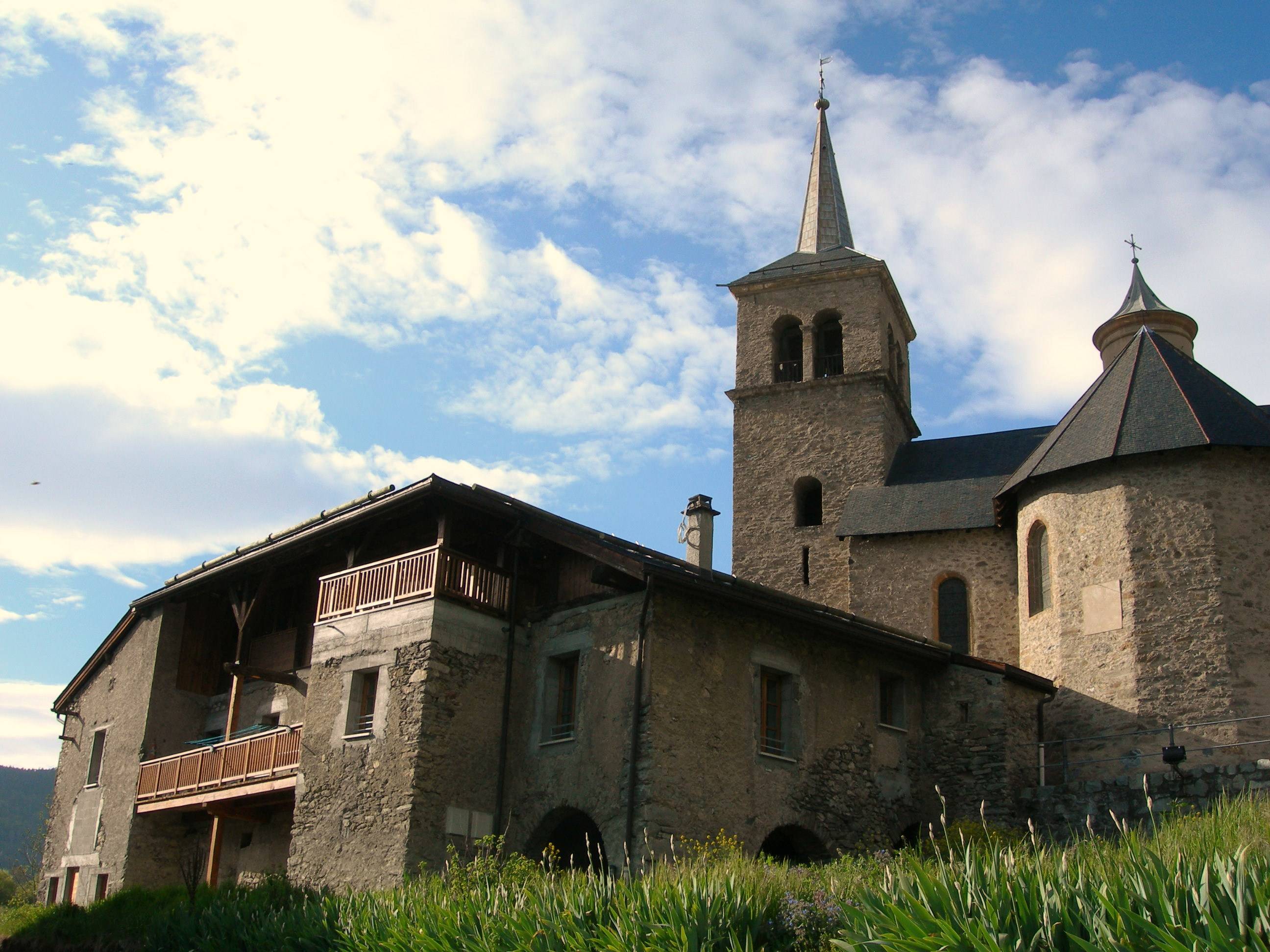
The hillsides of Aigueblanche (B12)
Description
This half day walk, though local villages and small woods is ideal for casual hikers and active families.
The loop starts uphill through meadows and small woods, allowing coverage on hot days, until arriving into Villoudry. Further up, the trail goes through Villargerel, offering a view of the valley down below, but also onto the Vallée du Morel and its 82 meter waterfall and The Cheval Noir (2832m) up above. The baroque church of Villargerel, historic monument, can be found at the highest point of the trail.
On the way back down, small paths wind once again through the woodlands, from the top to the eastern side of Villoudry and then Bellevue and Les Granges. Once at the bottom, follow the road for 300 meters and then the train tracks until passing the Plan du Truy. To head back to Grand Coeur on the Chemin des Vignes, walk along the old terraces, built to accommodate the vines, on an easy path with several benches to catch a last glimpse of the view.
- Departure : Grand Coeur, school car park
- Arrival : Grand Coeur, school car park
- Towns crossed : AIGUEBLANCHE
Forecast
Altimetric profile
Recommandations
Crossing of a busy road, stay cautious.
Access and parking
From Albertville, RN90 (exit 38), RD990A (rue de la Cassine), then RD990 (take a left under the bridge), right turn on Rue de l’Eglise, then second road on your left onto Rue des Seigneurs de Cor where you’ll find the car park 150 meters further on your right.
From Moutiers, RN90 (exit 37), then RD990 until Grand Cœur, first turning on your left onto Rue du Pilat and then straight ahead up to the car park.
Parking :
Accessibility
- Emergency number :
- 114
2 points of interest

L'église baroque Saint Martin de Villargerel - PJAC  History
HistoryBaroque church of St Martin de Villargerel
This remarkable, listed building was completed in 1685. Step inside to admire the decorative wall paintings and altarpieces. The dome also bears trompe l'oeil paintings.
Open in July and August, or by appointment. Why not also make the most of the outings organised by Aigueblanche's Culture & Heritage association?
http://www.aigueblanche-patrimoine.com/
Le chemin des vignes - CCVA  Know-how
Know-howVine route
The Aigueblanche vineyard was once highly reputed and the quality of its wine praised particularly by the Royal Academic Society of Savoie (1845).
From very ancient times, the well-exposed hillsides were planted with vines. The main grape varieties at the time were the douce noir de le Bois, le guy noir, martincot, le gouche, le régentât and hyvernais de Tarentaise for red wine and la jacquère, le guy blanc, le gouais, le bellochin and le blanc verdun for white wine. In the 18th and 19th centuries, villagers in the Aigueblanche valley bought the feudal rights over livestock rearing, crop-growing, the wood and the vines, which were the property of the archdiocese and nobility.
Each family had their own sartot, a typical hut for storing tools. In 1876 phylloxera reached Savoie and wiped out most of the vines. Each of the plants had to be replanted one by one and many vinegrowers used more rustic seedlings that better withstood the climate. It was at this time that the present-day vine route would be developed to facilitate vinegrowing work between Grand-Coeur and Aigueblanche. Nowadays much of the vineyard has been abandoned: the only surviving remnants of this past being the terraces and the sartos.
